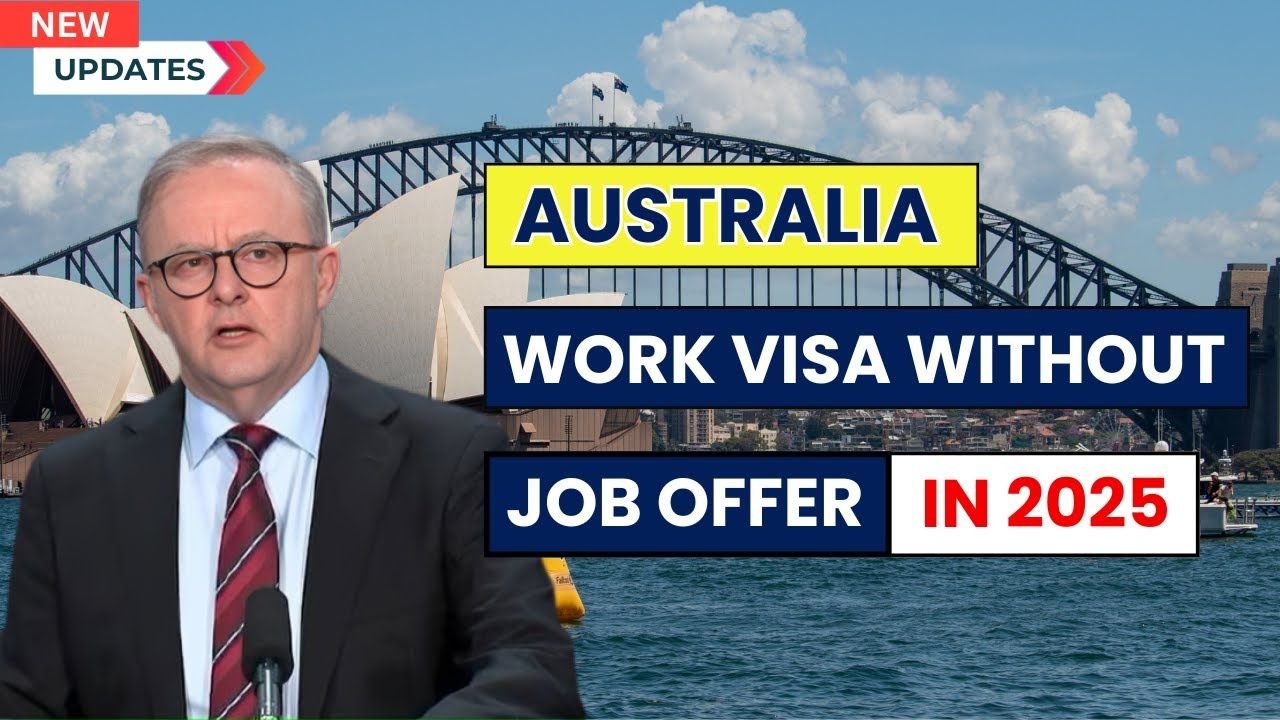Australia has introduced a comprehensive set of reforms to its work visa system in 2025. These changes aim to modernize the visa process, attract global talent, and address labor shortages in critical industries across the country. Whether you’re a skilled professional, a recent graduate, or a remote worker, here’s everything you need to know about these updates.
1. Introduction of the Skills in Demand (SID) Visa
The Skills in Demand (SID) Visa has replaced the Temporary Skill Shortage (TSS) Visa. It now consists of three distinct streams tailored to different sectors and skills. The Specialist Skills Stream is targeted at highly qualified workers in technology, engineering, and green energy. The Core Skills Stream is designed for professionals in industries like healthcare, construction, and education. The Essential Skills Stream focuses on workers in areas such as aged care, tourism, and hospitality.
One of the most notable changes is the reduction in required work experience. Applicants now only need one year of relevant experience, down from the previous two-year requirement. This adjustment, which comes into effect in November 2024, is expected to make the visa more accessible. Additionally, SID visa holders can now apply for permanent residency after just two years of employment in Australia through the Temporary Residence Transition stream.
2. Digital Nomad Visa Launched
To appeal to the growing number of remote professionals, Australia has launched a new Digital Nomad Visa. This visa allows individuals to live in Australia while continuing to work for companies based overseas.
To qualify, applicants must be employed by a foreign company and earn an annual salary of at least AUD 80,000. They must also have valid health insurance and arrange their accommodation prior to entry. The visa is initially granted for one year, with the option to extend for an additional year.
3. Pacific Engagement Visa (PEV)
The Pacific Engagement Visa (PEV) is a newly introduced visa that offers permanent residency opportunities to citizens of Pacific Island nations. This initiative is part of Australia’s strategy to strengthen regional ties and workforce cooperation.
To be eligible, applicants must be citizens of designated Pacific countries, meet Australia’s health and character requirements, and have a job offer in sectors like agriculture, care services, or construction. Each year, 3,000 permanent residency spots will be made available under this visa.
4. MATES (Mobility Arrangement for Talented Early-professionals Scheme)
The MATES program is a bilateral agreement between Australia and India that provides work opportunities for young Indian graduates. It supports early-career professionals in fields such as technology, engineering, and finance.
Through this program, up to 3,000 Indian professionals can secure employment in Australia each year. A ballot (lottery) system will be used for selection, ensuring equal opportunity for all eligible applicants. The program fosters skill development and international collaboration between the two nations.
5. Increase in Salary Threshold
To maintain fair compensation and protect domestic labor standards, the Temporary Skilled Migration Income Threshold (TSMIT) has been increased. Starting July 1, 2024, the minimum annual salary for skilled migrants has risen from AUD 53,900 to AUD 70,000. This ensures that foreign workers are not underpaid and are aligned with the broader Australian wage structure.
6. Introduction of Visa Ballot Systems
Australia has adopted ballot-based systems for certain high-demand visa categories. The Work and Holiday Visa Ballot is now applicable to applicants from India, China, and Vietnam. The MATES Visa is also issued via a lottery system for Indian early-career professionals. Additionally, the PEV Visa includes a ballot system for eligible Pacific Islanders. These measures are designed to ensure fair access to visa opportunities in cases where demand exceeds supply.
7. Core Skills Occupation List (CSOL) Update
The Australian government has introduced a new Core Skills Occupation List (CSOL), which identifies over 450 occupations in high demand. While this list aims to align skilled migration with the country’s economic needs, it has drawn some criticism. Key construction-related roles like crane and bulldozer operators were initially excluded, despite labor shortages in the industry and the ongoing housing crisis.
8. Policy Adjustments After Public Backlash
Some early choices in the new CSOL led to public backlash, particularly the exclusion of internationally renowned chefs due to overly specific caveats. Meanwhile, controversial roles such as brothel managers had been included. In response to widespread criticism from the hospitality and tourism sectors, the Australian government quickly amended its policy to ensure that world-class chefs and other essential professionals could still be granted visas under special conditions. This move demonstrated the government’s willingness to listen and respond to industry feedback.
Conclusion
The 2025 changes to Australia’s work visa framework reflect a forward-thinking, skills-based approach to migration. With new pathways like the Skills in Demand Visa, the Digital Nomad Visa, and special programs for Pacific and Indian nationals, Australia is actively reshaping its migration system to meet modern workforce needs. Whether you’re planning to work in Australia short-term or looking for a path to permanent residency, staying informed about these changes is crucial.
